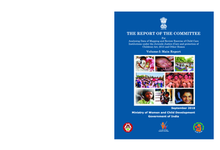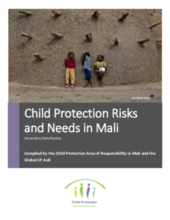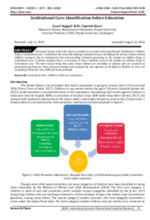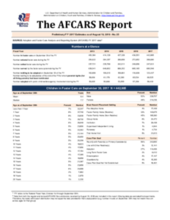Displaying 121 - 130 of 558
The present study report is based on data collected through the National Mapping Exercise in India covering all child care institutions (CCIs)/Homes except 34 CCIs/Homes in Uttar Pradesh. The details of scenario captured by these statistics are expected to provide necessary guidance to all stakeholders regarding improvements required in policy formulation and implementation in future.
This review of secondary sources refers to information on child protection risks and violence against children in Mali, collected from 2016 to 2018.
This paper presents the top fifteen priority areas for research investment as identified by a research priority setting exercise conducted by the Assessment, Measurement & Evidence (AME) Working Group of the Alliance for Child Protection in Humanitarian Action (ACPHA).
In the current study, several assessments for attachment disorder symptoms are used within a German sample of foster children after being exposed to neglect and maltreatment in their biological families.
This paper brings to fore the need to compile an accurate and comprehensive database for children living in institutional care in India.
This report from the US Administration on Children, Youth and Families, Children's Bureau presents statistics and figures on foster care in the US for 2017, including the number of children in care disaggregated by age, sex, race/ethnicity, placement type, time in care, and more.
Este informe, producido por la Alianza Cristiana para los Huérfanos, tiene objetivo de presentar las estadísticas relacionadas con los huérfanos para que "defensores cristianos de los huérfanos" logren una comunicación efectiva con humildad, credibilidad e integridad.
Nationally representative, population-based data from rounds four and five of the Multiple Indicator Cluster Surveys (MICS) and four to eight of the Demographic and Health Surveys (DHS) from 61 low- and middle-income countries were used to estimate prevalence and socio-economic factors associated with leaving children under five years old home alone or under the care of another child younger than 10 years of age.
This webinar series offers technical assistance to child welfare agencies in the US on how to use data to improve outcomes for children and families.
This year’s Data Book presents current data and multiyear trends measuring child wellbeing in the US along four domains: (1) Economic Well-Being, (2) Education, (3) Health and (4) Family and Community.






